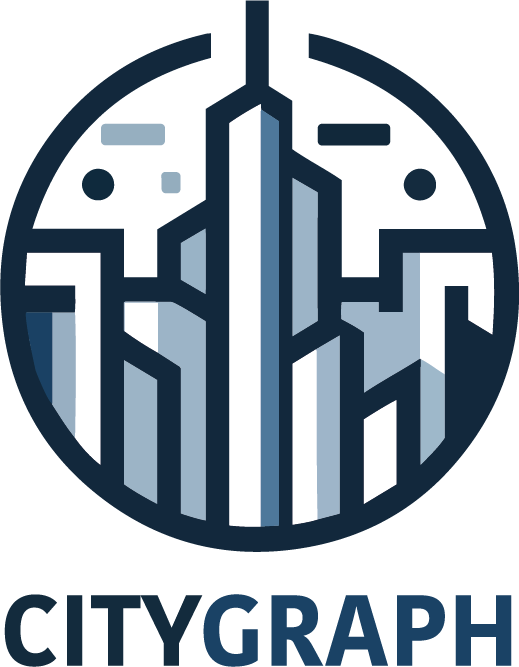CityGraph
Welcome to CityGraph
Tools[edit | edit source]
CityGraph Projects[edit | edit source]
The Kosmograph project aims to address a critical limitation in current visualization tools: their inability to scale effectively for very large graphs, including Knowledge Graphs. As the volume and complexity of datasets continue to grow exponentially, conventional visualization tools struggle to provide meaningful insights.
To overcome this challenge, Kosmograph is developing a cutting-edge tool specifically designed to handle vast datasets and support comprehensive data exploration. By leveraging advanced algorithms and innovative techniques, Kosmograph enables users to visualize, analyze, and interact with massive graphs efficiently.
Key features of the Kosmograph project include:
- Scalability: Kosmograph is engineered to manage immense datasets, allowing users to explore complex relationships within Knowledge Graphs and other large-scale structures.
- Advanced Visualization: The tool offers intuitive and interactive visualizations that facilitate the exploration of intricate data patterns and connections.
- Data Exploration Capabilities: Kosmograph empowers users to delve deep into their data, uncovering valuable insights and discovering hidden relationships that might otherwise remain obscured.
- User-Friendly Interface: Despite its robust capabilities, Kosmograph maintains a user-friendly interface, ensuring accessibility for both experts and novices in data analysis.
XGExplainer: Robust Evaluation-based Explanation for Graph Neural Networks
For the experiment of explanations for node and graph classification, we customize the experiment setting and implementation of GNNExplainer taken from MixupExplainer: Generalizing Explanations for Graph Neural Networks with Data Augmentation , and PGExplainer taken from [Re] Parameterized Explainer for Graph Neural Networks.
Note that by default, the experiment will use the pretrained models that are saved in ExplanationEvaluation/models/pretrained/GNN/{dataset_name}. If you wish to use a newly trained model, move the trained model from checkpoints/GNN/{dataset_name}. A standard GNN will be saved in the directory dataset_name while GNNeval is saved in dataset_name/GNN_EVAL.
We used two different conda environment to run GNNExplainer and PGExplainer. This is due to the inability to use the original implementation of GNNExplaine due to a depricated functionality of Pytorch Geometric. Please prepare the following two different environments for reproducing XGExplainer+GNNE and XGExplainer+PGE, respectively.

